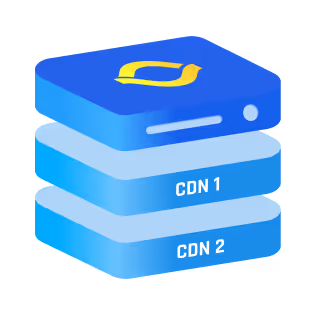Ever feel like your app is doing more than you told it to? Maybe you’ve secured all your known endpoints, but somehow, you’re still seeing suspicious activity. That’s where something called a Shadow API comes into play—and if you’re not watching closely, it can quietly become your biggest blind spot.
If you work with APIs, especially in growing teams or fast-moving environments, shadow APIs are almost guaranteed to show up. And no, they’re not some kind of sneaky feature built on purpose. They usually emerge from changes, oversights, or experiments that never made it into the official documentation.
What Is a Shadow API?
A shadow API is an API that exists in your system but isn’t tracked, documented, or properly secured. Think of it like a forgotten door at the back of your app—one that was used during testing, or for a feature that got shelved, but never fully shut.
It might have been created by a dev during a rush sprint and then left behind. Or it could be an old version of your public API that’s still active, even though you’ve moved on.
The bottom line? It’s real, it works, and if you’re not careful, attackers can find it before you do.
Where Do Shadow APIs Come From?
They pop up in more places than you'd expect:
- Old endpoints that were never deprecated properly
- Internal tools accidentally exposed to the public
- A/B tests or beta features built with separate routes
- Third-party integrations that spin up their own endpoints
- Migrations and refactors that leave the old code still running
If your team’s growing or your infrastructure is complex, shadow APIs can multiply without anyone noticing.
{{cool-component}}
Why Should You Care About Shadow API Security?
Let’s keep it real. If you don’t know an API exists, you’re probably not monitoring it. That means:
- No authentication checks
- No rate limiting
- No logging or alerting
- No patching or updates
That’s basically an open invitation for attackers. And once they find a shadow API, they can use it to sneak in, pull data, or launch broader attacks.
You can’t protect what you don’t know exists—and attackers know that better than anyone.
The Hidden Costs of Ignoring Shadow APIs
It’s easy to brush off shadow APIs as “low priority.” After all, if nobody’s using them (as far as you know), what’s the harm?
But here’s the thing—you pay for them, whether you notice or not.
- Security Risk: The obvious one. If an attacker finds your shadow API before you do, it’s like handing them a backdoor.
- Compliance Violations: If you’re in a regulated industry (finance, healthcare, SaaS), exposing personal or sensitive data through undocumented APIs can land you in legal hot water.
- Data Leaks: Many shadow APIs were never built with real protections in mind. Even a small mistake can expose user data or internal systems.
- Wasted Dev Resources: Teams often duplicate work because they don’t know an old, hidden endpoint already exists.
- Loss of Trust: If customers find out you left something exposed—especially something that shouldn’t have been live—it reflects badly. Period.
So while they seem invisible, the real cost of shadow APIs adds up in ways you might not expect.
Why Shadow APIs Happen (And How to Prevent Them Early)
Shadow APIs don’t come out of nowhere. They’re usually a side effect of how fast teams build these days.
Here’s why they show up:
- A developer spins up a quick endpoint during testing—and forgets to remove it
- A team launches a beta feature—but never tells security or docs
- An endpoint changes, but the old one doesn’t get shut down
- There’s no version control or lifecycle tracking in place
- Internal tools start talking to each other—but no one logs what endpoints are created
And honestly? It’s not about bad devs. It’s just that things move fast. Unless you intentionally set up ways to spot and track APIs, they’ll slip through.
To prevent them early:
- Make API documentation a required step—not an optional one
- Integrate API discovery tools into your CI/CD or staging environments
- Do regular audits using API gateways or WAF logs
- Automatically flag any traffic hitting unknown endpoints
- Encourage cross-team awareness—dev, security, ops, and product should all know what’s live
Catch them early, and they never get the chance to become a threat.
{{cool-component}}
Shadow Traffic API is the Hidden Clue
One way you do get a glimpse of shadow APIs is through something called shadow traffic API behavior. This is traffic hitting endpoints you didn’t know you had.
Let’s say your logs are showing requests to /v1/legacy-user-data—but you’re pretty sure your current API starts at /v2/. That’s shadow traffic. And it’s telling you someone, somewhere, is hitting an old or undocumented endpoint.
It could be:
- A user still running an old version of your app
- A script you forgot about
- Or, in the worst case, someone scanning your surface for vulnerabilities
Either way, shadow traffic is one of the best early warnings you’ll get—if you’re paying attention.
Shadow Server API is the Bigger Risk
Some shadow APIs live on entirely separate infrastructure. This is what people mean when they talk about a shadow server API—basically an endpoint that’s not just undocumented, but running on a server you don’t even think is active anymore.
These often happen after cloud migrations or team transitions. Maybe someone spun up a staging server, exposed a few routes for testing, and never shut it down. Months later, that server’s still up. Still responding. Still exploitable.
And it’s not part of your regular CI/CD pipeline, so no one’s checking for patches, auth updates, or firewall rules.
Scary, right?
How Do You Discover Shadow APIs?
Finding shadow APIs is about watching real-world behavior.
Here’s how to start:
- Use API gateways or WAFs (Web Application Firewalls)
Tools like Cloudflare, AWS API Gateway, or Apigee can log all incoming traffic—even to unknown endpoints. - Monitor DNS and network-level traffic
Look for outbound requests that don’t match known domains or services. - Audit your OpenAPI (Swagger) specs
Compare your API documentation with live traffic. Anything showing up in logs but missing from docs? That’s a red flag. - Run API security scanners
Tools like Salt Security, Noname, or even open-source options like OWASP ZAP can catch undocumented routes and unprotected paths. - Set alerts for shadow traffic API patterns
Once you’ve found unusual routes, tag them and watch for repeat hits. That’s where you’re likely to find trouble brewing.
How to Handle and Prevent Shadow APIs
Once you’ve identified shadow APIs, the goal is simple: clean up and lock down.
Here’s your step-by-step:
- Document everything – If it’s live, it needs to be in your docs
- Deprecate and remove old endpoints – Don’t just hide them. Kill them.
- Set up strict access controls – Even for internal APIs, use auth tokens
- Add logging and monitoring – Every request should leave a trail
- Limit exposure – Use private networks or VPCs where possible
- Automate detection – Use tools that flag undocumented routes automatically
Remember, you’re not just doing this once. Shadow APIs keep showing up—especially in fast-moving dev teams. So you need to make discovery and cleanup part of your regular security hygiene.
{{cool-component}}
Shadow APIs vs Zombie APIs: What’s the Difference?
These two terms get tossed around a lot—and while they sound spooky, they’re not the same thing.
- A shadow API is something undocumented and unknown. It’s alive, exposed, and usually forgotten or hidden in plain sight.
- A zombie API is one that used to be active, was officially deprecated, but is still up and running behind the scenes.
So, all zombie APIs are known—but maybe ignored. Shadow APIs, on the other hand, are more dangerous because you might not even know they exist until something goes wrong.
The fix? Same idea for both: visibility, logging, and eventually shutting them down or securing them properly. You can’t afford to leave either of them wandering around your system.
Final Thoughts
Shadow APIs are sneaky. They don’t show up on your roadmap, and nobody writes blog posts about building them—but they exist. And the longer they go unnoticed, the more damage they can do.
If you’re serious about security, shadow API detection isn’t optional anymore. You need to know what’s really running behind your app. You need to check for shadow traffic. You need to sniff out old shadow server APIs.



.png)
.png)
.png)






